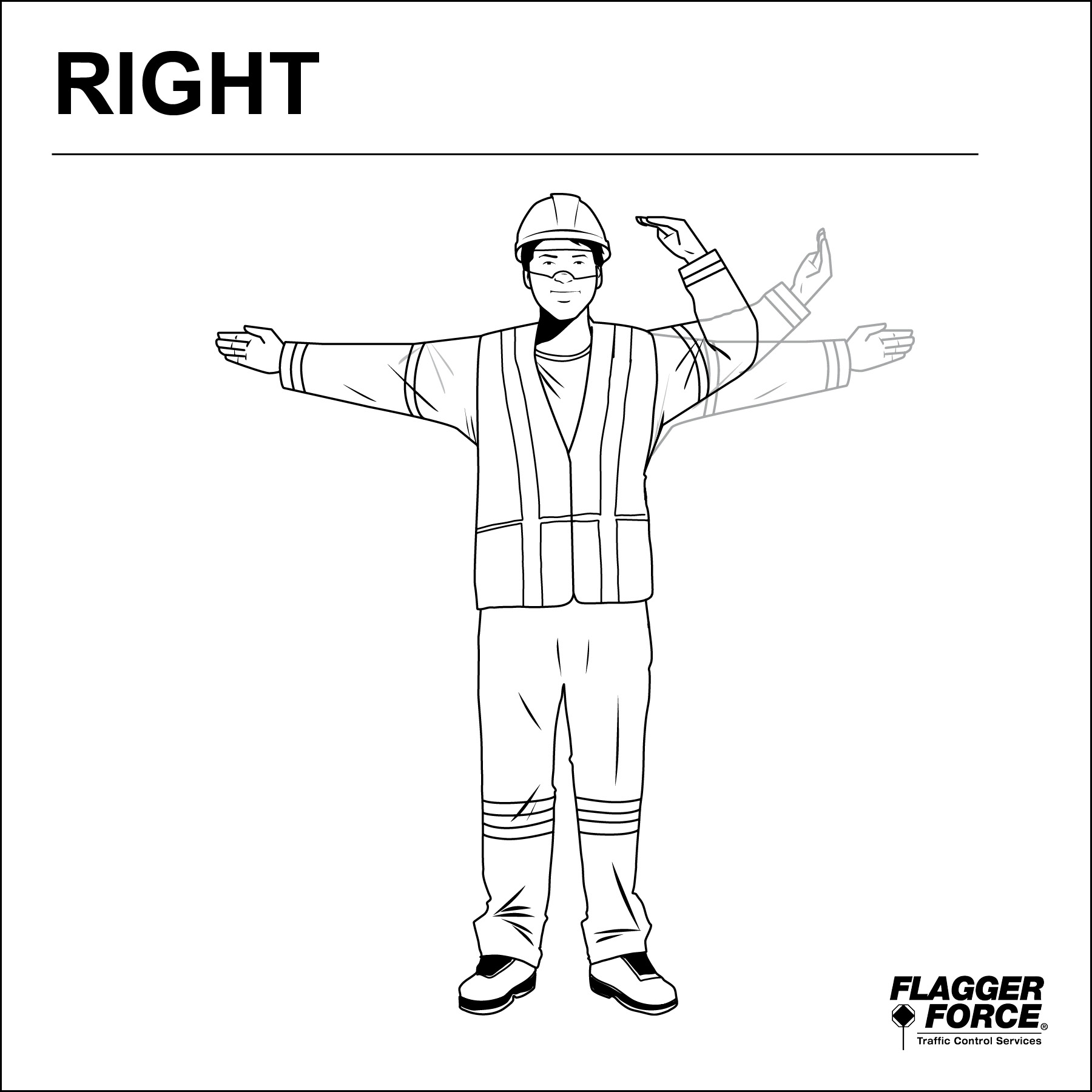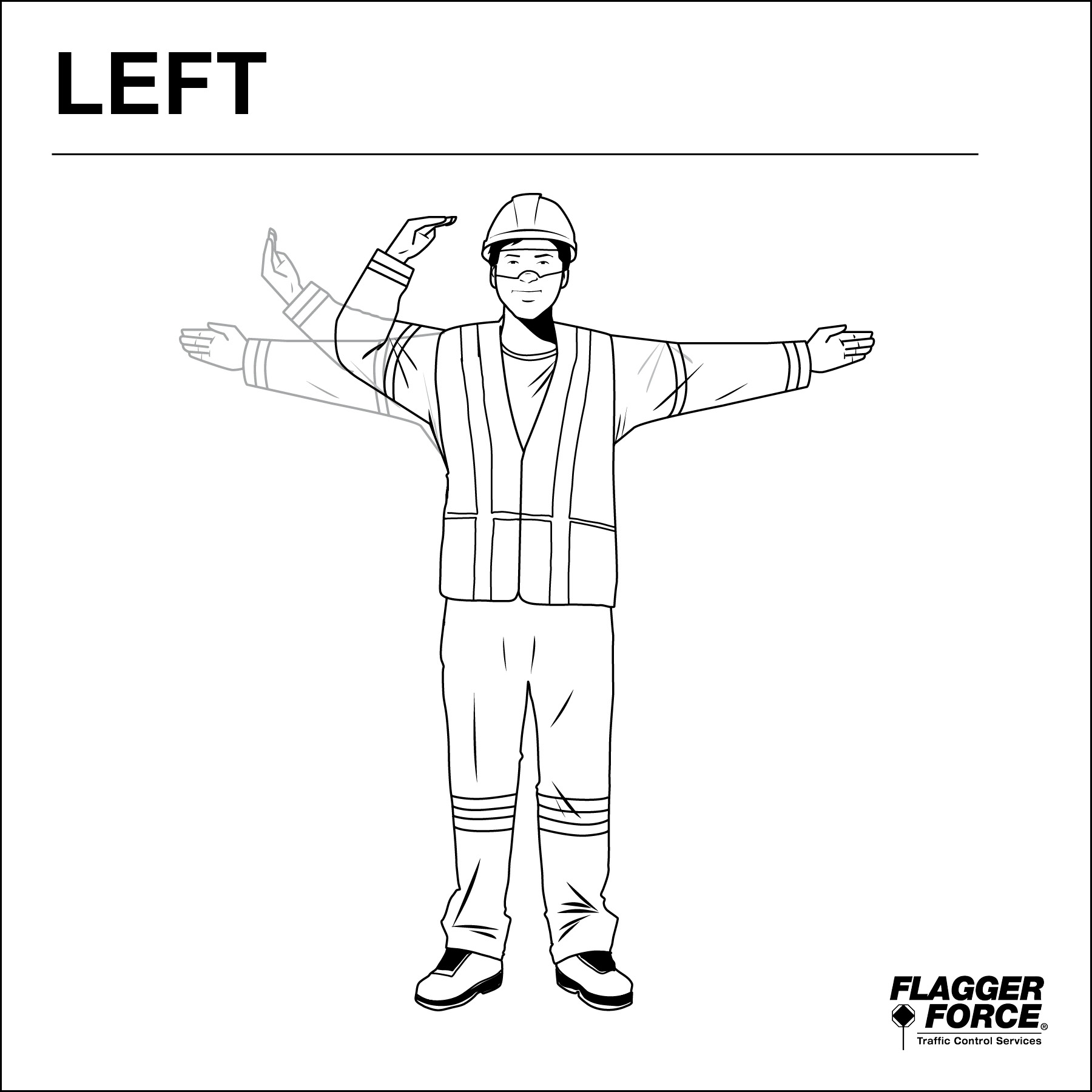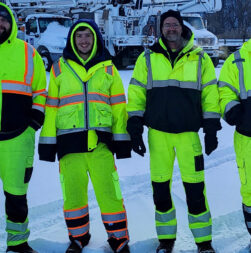Clear, consistent communication is an important part of safety in any job. But when you’re in a work zone, nonverbal communication is especially important. It creates a safer environment for yourself, your coworkers, the client, and for the traveling public.
Effective nonverbal directives are an important way to convey instructions, even when others can’t hear you. As a traffic control professional, Flagger Force requires you to learn standard signals and sign protocol. With the a combination of hand signals, arm motions, and stop/slow paddle signs, we move motorists safely through our work zones.
Consistent Flagging Signals Increase Work Zone Safety
At Flagger Force, we keep our communities moving by making safety a priority. That’s why we train each employee on ways to deliver nonverbal directions to motorists quickly and effectively. We use a number of hand signals and some basic traffic control equipment to ensure a smooth flow of traffic.
While every employee is equipped with a stop/slow paddle while actively flagging, the combination of signs and nonverbal hand signals are needed to plainly deliver directions and messages to motorists. While the stop/slow paddles are highly visible and often effective on their own, nonverbal communication, such as hand signals, are often needed to help the motorists move through the work zone safely.
Stop/Slow Paddle Hand Signals Used to Increase Work Zone Safety
It’s important to be clear and consistent when interacting with motorists who are traveling through your work zone. See specific nonverbal signals below that help direct motorists safely through the work zone.
Signaling to Stop
When the stop/slow paddle says “STOP,” it communicates to motorists to halt until further instruction. Make sure your paddle reads “STOP.” Then, extend your left arm (free hand used for communication) and hold hand out with your palm up facing traffic. This is a universal sign for “STOP.”
Signaling to Slow
When it is safe for traffic to proceed, flip your stop/slow paddle around to “SLOW” to signal to motorists that it is safe to proceed at a slow pace. Extend your left arm (free hand used for communication) out to the side and wave it in toward the front of your body. Doing so in a fluid, consistent motion signals to the motorist that it is safe to move forward through the work zone.
Signaling to Slow Down
Sometimes traffic accelerates at a dangerous speed, or a single motorist tries to speed through the work zone aggressively. When you need motorists to slow down, extend your left arm (free hand used for communication) and make a pushing motion toward the ground. This motion signals to the motorist to move forward while cautioning them to watch their speed.
Vehicle Hand Signals Used to Increase Safety
Hand signals also come in handy when working with vehicles on or off the job site. Nonverbal hand signals not only improve communication, but are also good ways to eliminate blind spots. Using a spotter when backing up, parking, or in other situations with a lack visibility will reduce the risk of injury.
Below are some examples of nonverbal vehicle signals.
Back Up Hand Signal
Often a driver needs help gauging distance or clearance when backing up. To help a driver back up, you can signal that it is safe to move by extending both arms out in front of your body and bending arms toward your chest. Doing this in a consistent, slow movement will help the driver understand what to do while keeping them at a reduced, steady speed.
Stop Hand Signal
To help the driver understand when it is time to stop, cross both arms above the head. This is a universal signal for “STOP,” and doing so overhead ensures visibility.
Emergency Stop Signal
If you see that the driver needs to stop immediately, signal for an emergency stop. Cross both arms overhead and wave down quickly and repeatedly. The rapid motion and repetitive signal signifies an emergency.
Left Signal
If you want the driver to move left, point left with your left arm fully extended, and wave your right hand over your shoulder, toward the left. Pointing in the direction you want the driver to go while motioning clears up any confusion.
Right Signal
If you want the driver to move right, point right with your right arm fully extended, and wave your left hand over your shoulder, toward the right.











